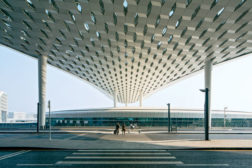Clifford A. Pearson
Contributing editor Clifford Pearson is the co-author, with A. Eugene Kohn, of The World By Design, and writes about architecture and urbanism.
ARTICLES
Sancaklar Mosque
Call to Prayer: Using rugged materials and a modern design vocabulary, an architect creates a place of worship that connects the essence of Islam with contemporary life.
Read More
WMS Boathouse at Clark Park
Stroke of Genius: Part of a mayor's push to make the Chicago River a public asset, an energetic building turns structure and materials into a graceful expression of the activity it houses.
Read More
Copyright ©2024. All Rights Reserved BNP Media.
Design, CMS, Hosting & Web Development :: ePublishing

